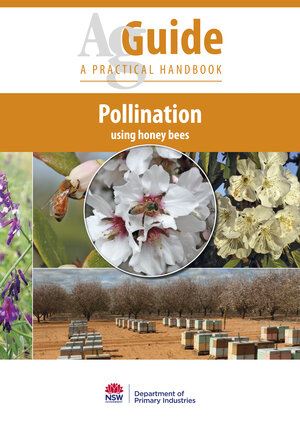 This edition is one of several produced for the Department of Primary Industries and these books are also available as eBooks that can be purchased online for immediate download. See our librarian, Sue Speck, for assistance.
This edition is one of several produced for the Department of Primary Industries and these books are also available as eBooks that can be purchased online for immediate download. See our librarian, Sue Speck, for assistance.
In this book beekeepers who are considering supplying honey bees for pollination to plant industries such as almonds will find information on how to:
- identify ideal foraging conditions for honey bees
- assess risks to bees at the pollination site
- assess hive strength
- prepare a commercial contract
For growers there is information about the conditions required for the welfare of bees and the optimum environment for their pollination activity. It talks about:
- a water supply for bees
- pollen and nectar for bees – there may be advantages in having other flowering plants nearby
- access roads
- a site plan and map
- safety information for workers
- knowledge of the risk to bees from pesticides
- a commercial contract
However, this book serves as a good general modern guide pertaining to beekeeping relative to all Australian states.
The clearly defined chapters contain concise and well-referenced information suitable not only for the novice beekeeper but also the experienced one who wants to gain further knowledge about important aspects such as pesticides, orchard design and management, hive management, plant structure and so on.
Appendix 2 contains an invaluable, detailed list of plants benefiting or relying on honey bee pollination, and describes their individual qualities and value to bees.
Edited by Barbara Horwood
Produced by Education Delivery, Tocal College (NSW) for the Department of Primary Industries (NSW Government), 2018

